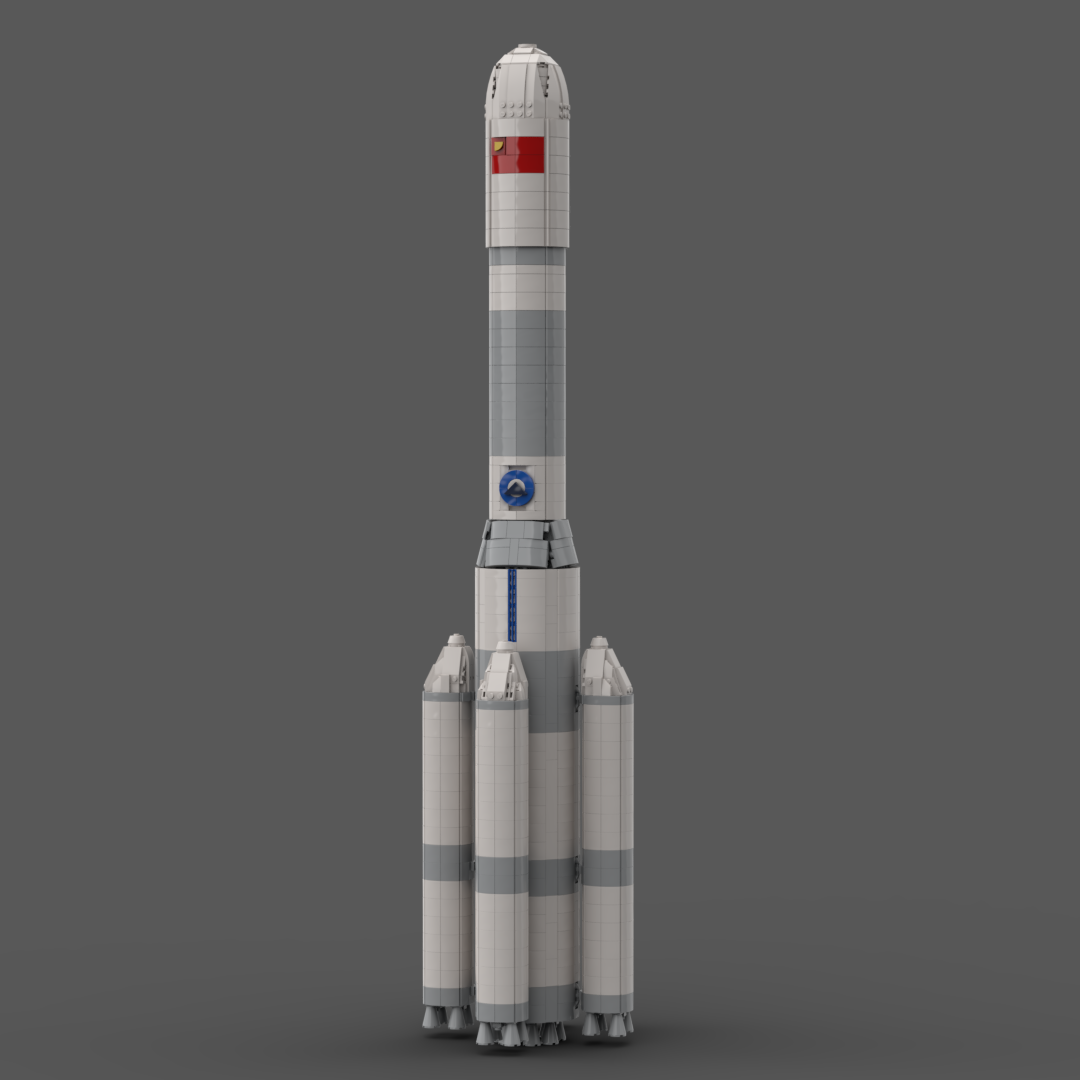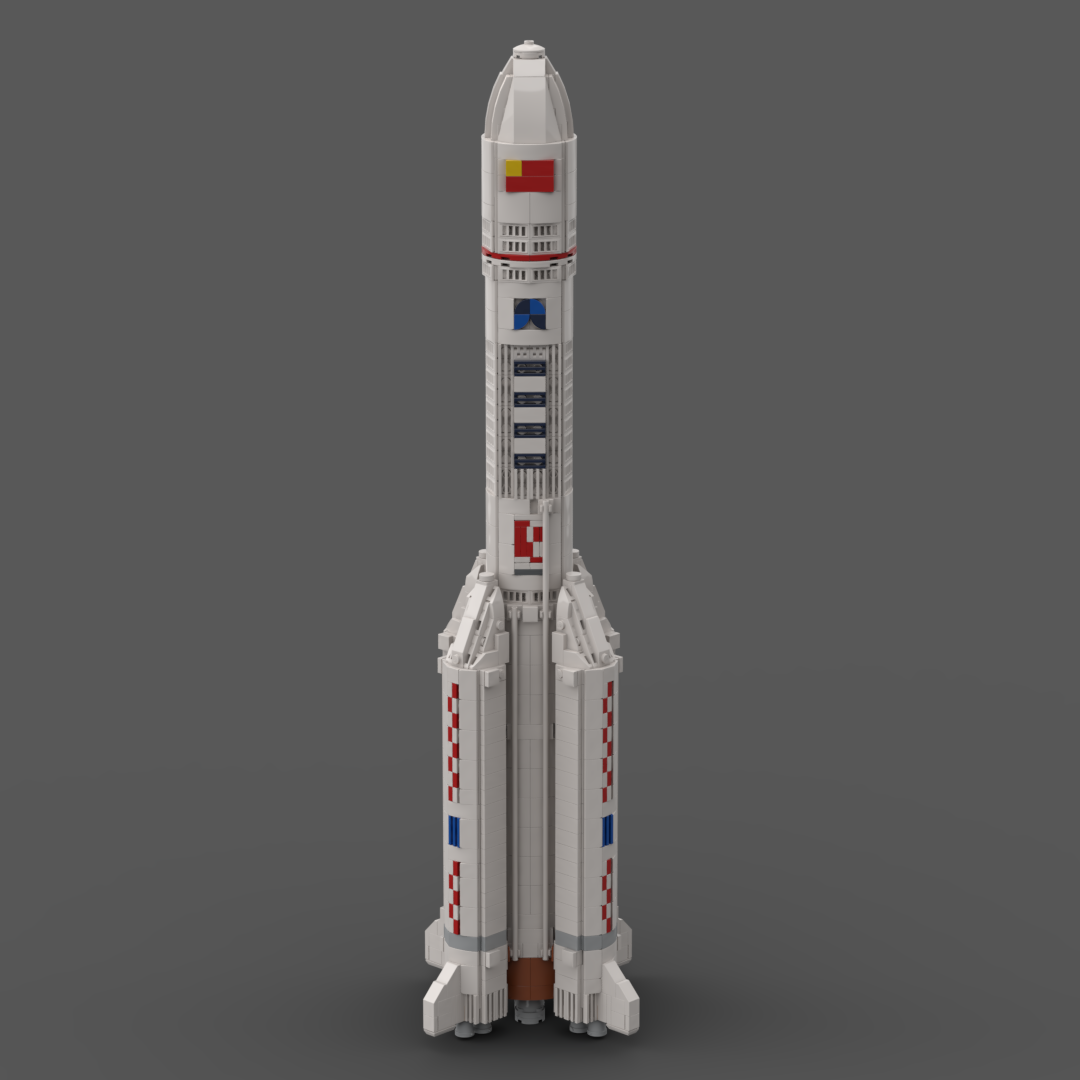
LEGO Designer:
Florentin Möller (SkySaac)
Designed:
March 2021
Categories:
All, Launch Vehicles, Space Agency - CNSA, Super Heavy Lift Launch Vehicles
Launch Vehicle Details
Stages:
Length:
Diameter:
Mass at Launch:
Low Earth Orbit Capacity:
Total Thrust:
Apogee:
Class:
Long March 9 (Chinese: 长征九号火箭, LM-9 or Changzheng 9, CZ-9) is a Chinese super-heavy carrier rocket concept that is currently under development. It is the ninth iteration of the Long March rocket family, named for the Chinese Red Army’s 1934–35 Long March campaign/retreat during the Chinese Civil War.
Current plans call for the Long March 9 to have a maximum payload capacity of 140,000 kg to low Earth orbit (LEO), 53,000 kg to trans-lunar injection, and 44,000 kg to Mars. Its first flight is expected to occur between 2028 and 2030 in advance of possible Chinese crewed lunar missions sometime in the 2030s time-frame.
As of 2016, the CZ-9 is designed as a three-staged rocket, with a first-stage core diameter of 10 meters and using a cluster of four engines. Multiple variants of the rocket have been proposed, with CZ-9 being the largest: this ‘base variant’ has four additional liquid-fuel boosters strapped onto the core stage (each individual booster would be up to 5 meters in diameter) and it is this variant that has the aforementioned LEO payload capacity of 140,000 kg. In addition to the base variant, there is the CZ-9A variant which has only two additional boosters and a LEO payload capacity of 100,000 kg. Finally, there is the CZ-9B having only the bare 10-meter diameter core stage and a LEO payload capacity of 50,000 kg. The expected payload capacities of the Long March 9 place it in the class of super heavy-lift launch vehicle; the rocket’s development program was formally approved by the Chinese government in 2021.
On 24 June 2021, Long Lehao, chief designer of the Long March series, provided some updates regarding the Long March 9 at the University of Hong Kong in a presentation titled “Long March Rocket and China’s Aerospace”. The original design, called the 11th version (2011), had been supplanted by a new design, called the 21st version, which featured many changes including an enlarged diameter of 10.6 meters, a length of 108 meters, and a weight of 4,122 tons. 16 YF-135 liquid oxygen kerosene engines, each with over 300 tons of thrust, will be used in the first stage; 120 ton hydrogen-oxygen engines will be used in the second and third stages, with four in the second stage and one in the third stage. All fuel tanks were changed to a common bulkhead design, and all external boosters had been removed. The payload capacity to low Earth orbit was increased from 140 to 150 tons, and the payload to trans-lunar injection was increased to 53 tons. Long noted that this new version was still under review as of the time of presentation.
Long March 9 Design TODO:
- Include red/white painting stuff on the boosters as used on many modern chinese rockets
- optional booster attachements changed by 45°
- a version not using the third stage for heavy LEO payloads similar to LM5/LM5B (I saw it in some random render, soo might as well include it)
- improve slope on the 2nd stage
- reduce height by 2 studs or so (the actual rocket is 93m high)
Part count: bricks, lots.
| Unit | width | length | height |
|---|---|---|---|
| Studs | |||
| Inches | |||
| Centimetres |
No external URL provided.
Launch History information from space.skyrocket.de
Launch History information from space.skyrocket.de


